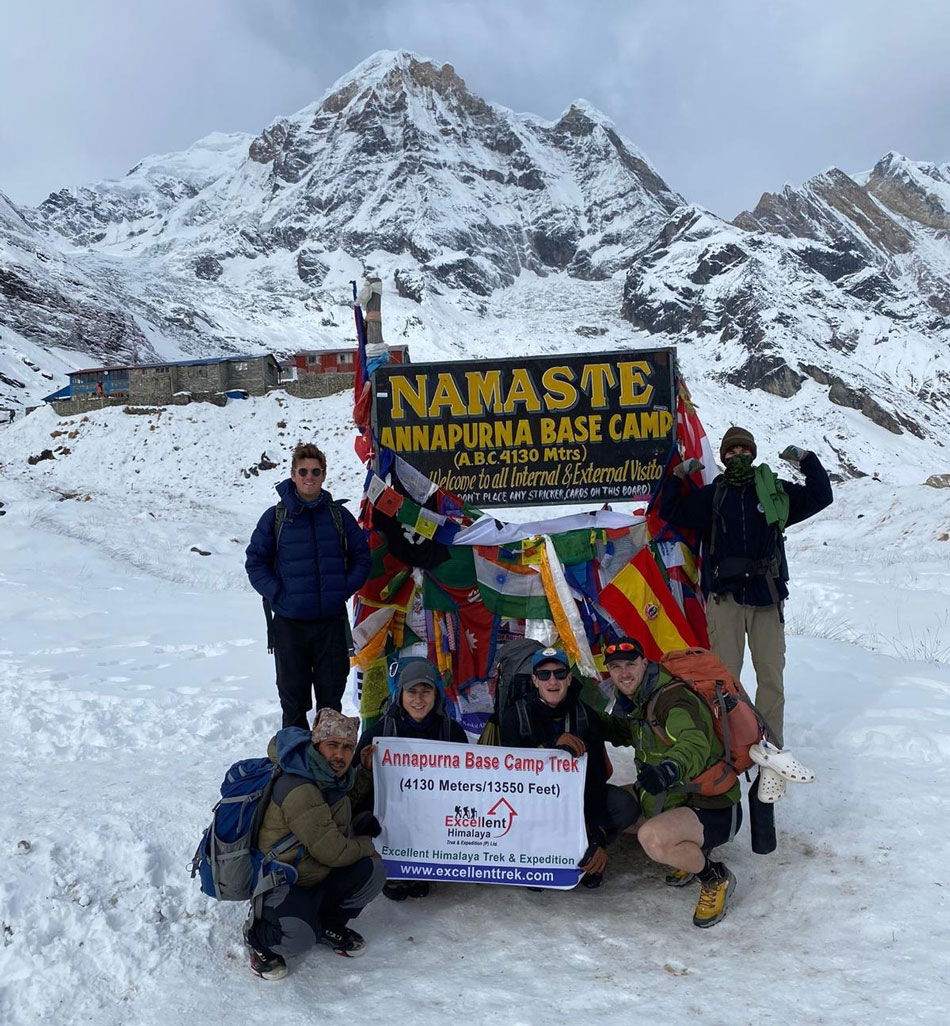Annapurna South Base Camp vs North Base Camp: A Comparative Analysis
Trekking in the Himalayas is like stepping into another world—a place of serene landscapes, majestic peaks, and a raw connection with nature. If you’re thinking about exploring the Annapurna region, you’ve probably come across two popular yet distinct destinations: Annapurna South Base Camp and Annapurna North Base Camp.
But here’s the big question—Annapurna south base camp vs north base camp: which one should you choose? It’s like picking between two beautiful paths leading to the same magical mountain, yet each with its own personality.
In this article, we’ll explore the differences between Annapurna South Base Camp and North Base Camp. It is a study of comparative analysis of these two trekking routes which help you to make the decision easier.

Table of Contents
- Introduction to Annapurna Base Camps
- What is Annapurna South Base Camp?
- What is Annapurna North Base Camp?
- Location & Accessibility
- Scenic Beauty & Landscape
- Altitude and Acclimatization Needs
- Trek Duration & Difficulty
- Trekking Routes Compared
- Wildlife and Flora
- Cultural Experience Along the Way
- Crowd Factor: Solitude vs Popularity
- Cost & Permits
- Accommodation & Facilities
- Best Time to Visit Each Base Camp
- Final Verdict: Which One is Right for You?
- FAQs
Introduction to Annapurna Base Camps
The Annapurna Massif in central Nepal is home to several breathtaking trekking routes. While most people have heard of Annapurna Base Camp (ABC), many don’t realize there are two main approaches: the South Base Camp (often just called ABC) and the lesser-known but equally stunning North Base Camp.
Both are gateways to Annapurna I (8,091 meters), the 10th highest mountain in the world, but they offer very different experiences.
What is Annapurna South Base Camp?
Annapurna South Base Camp is the popular and well-established route that thousands of trekkers take each year. It’s located on the southern side of the Annapurna range and is often accessed via Pokhara. This trek is rich in greenery, cultural experiences, and cozy teahouses.
It’s famous for its 360-degree mountain views, including Machapuchare, Hiunchuli, and Annapurna South.
What is Annapurna North Base Camp?
The Annapurna North Base Camp is less frequented and more remote. Situated near the Kali Gandaki Gorge and the village of Narchyang, it gives you a front-row seat to the north face of Annapurna I—a chillingly majestic wall of ice and rock.
The route here is still developing, meaning fewer crowds, raw nature, and a more expedition-like feel.
Location & Accessibility
South Base Camp is easily accessible from Pokhara via Nayapul or Ghandruk. The trail is well-marked and supported by local tourism.
North Base Camp, on the other hand, is accessed from Narchyang village after reaching Tatopani. The path is less developed, and often involves off-the-beaten-track travel.
Winner: South Base Camp (for ease of access)
Scenic Beauty & Landscape
Both treks are beautiful, but in different ways.
South Base Camp: Think lush forests, rhododendron blooms, cascading waterfalls, and snow-covered peaks.
North Base Camp: Imagine a dramatic alpine setting, steep rocky terrain, and the massive north face of Annapurna staring you down.
Analogy: If the South Base Camp is like a romantic poem, the North Base Camp is an epic novel full of suspense and adventure.
Winner: Tie (depends on your taste)
Altitude and Acclimatization Needs
South Base Camp Altitude: 4,130 meters
North Base Camp Altitude: Around 4,200 meters
Although similar in elevation, the North route has a steeper gradient, and the lack of gradual ascent can lead to higher risk of altitude sickness.
Winner: South Base Camp (safer altitude profile)
Trek Duration & Difficulty
South Trek Duration: 7 to 12 days depending on start point and pace.
North Trek Duration: 10 to 14 days, and more physically demanding due to rough trails and fewer stopovers.
South Base Camp offers gradual climbs and comfortable daily treks, whereas North Base Camp demands more endurance and navigation skill.
Winner: South Base Camp (easier for most trekkers)
Trekking Routes Compared
South Base Camp Route:
Nayapul → Ghandruk → Chhomrong → Deurali → ABC
Scenic villages, terraced farms, and forested trails.
North Base Camp Route:
Beni → Tatopani → Narchyang → Hum Khola → North Base Camp
Less infrastructure, fewer teahouses, and more river crossings.
Winner: South Base Camp (for route development)
Wildlife and Flora
South Route: Rich biodiversity, including langurs, Himalayan monals, and lush rhododendron forests.
North Route: Less vegetation but more chances to see Himalayan blue sheep, eagles, and even snow leopards (rarely).
Winner: South Base Camp (for variety)
Cultural Experience Along the Way
South Base Camp passes through Gurung villages like Ghandruk and Chhomrong, where you’ll be welcomed with warm smiles and traditional dal bhat.
North Base Camp winds through Magar settlements, offering more raw and untouched cultural encounters.
Winner: Tie (both offer unique culture)
Crowd Factor: Solitude vs Popularity
South Base Camp: Very popular, especially in spring and autumn.
North Base Camp: Remote and uncrowded, perfect for solitude seekers.
If you want a peaceful, meditative experience, North wins hands down.
Winner: North Base Camp
Cost & Permits
Both treks require:
TIMS Card
ACAP (Annapurna Conservation Area Permit)
However, North Base Camp might incur additional costs for guides, porters, and camping gear due to fewer facilities.
South Base Camp is more budget-friendly all trekkers.
Winner: South Base Camp
Accommodation & Facilities
South Base Camp: Full of teahouses, lodges, and shops.
North Base Camp: Limited options—camping may be required.
If hot showers and Wi-Fi matter to you, the south route is the way to go.
Winner: South Base Camp
Best Time to Visit Each Base Camp
Ideal Months:
South Base Camp: March-May, September-November
North Base Camp: April-May, October-November
Monsoon and winter are tricky for both due to slippery trails and cold weather.
Winner: Tie
Final Verdict: Which One is Right for You?
Choose Annapurna South Base Camp if:
- You’re a first-time trekker
- You want comfort and good facilities
- You enjoy meeting fellow trekkers
Choose Annapurna North Base Camp if:
- You seek a remote, challenging experience
- You want solitude and rugged adventure
- You’re okay with fewer comforts
Ultimately, it’s not about which is better—it’s about what kind of journey you’re seeking.
For the itinerary and further info of Annapurna South Base Camp, please click on this link: Annapurna South Base Camp Detail.
For the itinerary and further info of Annapurna North Base Camp please click on this link: Annapurna North Base Camp Detail.
Excellent Himalaya Trek and Expedition is the leading local trekking operator for both Annapurna South Base Camp and North Base Camp. For any further information about this trek, please email at [email protected] or WhatsApp at +977 9851203181.
FAQs
1. Is Annapurna North Base Camp safe for solo trekkers?
Not recommended. The trail is remote with fewer people around. It’s best to go with a guide or group.
2. Can beginners trek to Annapurna South Base Camp?
Yes, many beginners complete the trek successfully with proper preparation and pacing.
3. Which trek is more scenic, North or South Base Camp?
Both are scenic in different ways. The South offers lush landscapes, while the North is more rugged and dramatic.
4. Do I need special permits for North Base Camp?
No special permits beyond TIMS and ACAP are needed, but having a guide is highly advisable.
5. Are there any tea houses at North Base Camp?
No. The North route is underdeveloped, and camping is usually necessary beyond Narchyang.




